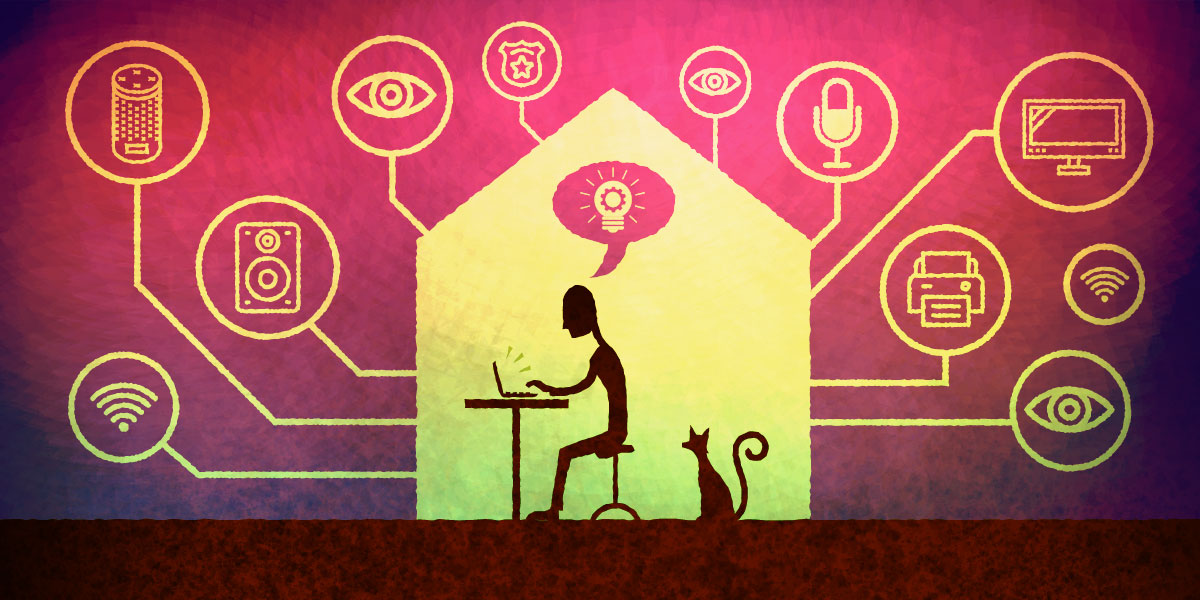
Here at Instant Global News, we prioritize your security and privacy rights in the digital world. The proliferation of smart devices and the Internet of Things (IoT) has brought convenience and luxury into our lives, but it has also raised concerns about privacy and security. Hackers and data miners now have unprecedented access to our personal and behavioral information, which has led to significant privacy and security problems.
Large botnets like Mirai and Fronton, consisting of Internet-connected IoT devices, have caused extensive damage and have given IoT a bad reputation in terms of security. Governments have started taking action to address this issue, such as the passage of the IoT Cybersecurity Improvement Act of 2020 in the US. On the privacy front, our connected devices and appliances are constantly collecting and transmitting data to companies without clear limits or transparency about how that data is used. Homeowners who add smart devices to their homes often find that these devices also collect and transmit data to third parties without their knowledge.
Fortunately, there are projects and protocols in development that aim to bring greater privacy and security to the connected home. The key is to move the orchestration of these devices from the cloud to your own network, with the help of a device called a “hub.”
Coordinating Your Smart Devices Locally With Home Assistant
Using a local hub offers two key benefits. First, it allows you to remove the need for multiple apps to control your various smart devices. Second, it ensures that you are not sharing your device usage data with unaccountable third parties or companies.
One popular option is Home Assistant (HA), an open-source, community-driven hub software that can be installed on platforms like Raspberry Pi or an old laptop. HA doesn’t require much processing power or memory, making it accessible to many users. After installing HA, you can add devices through “integrations” that allow you to control and manage different categories of devices. Even if your device isn’t officially supported, there is a high chance it is available through the unofficial Home Assistant Community Store (HACS).
One important feature of HA is that it indicates whether an integration relies on the cloud or not. For integrations that don’t rely on the cloud, it is recommended to block the device from internet connectivity. While this may not be easy for most smart electronics, if you have a home firewall or configurable router, you may be able to limit the connections it makes to your local network.
Using Zigbee or Z-Wave to Create a Private Smart Mesh
Zigbee and Z-Wave are wireless open protocols specifically developed for smart devices. They operate on a separate network from your home Wi-Fi network, providing a level of separation between your smart devices and the internet. However, this separation is not maintained when using an untrustworthy hub. It’s essential to use a privacy-focused hub, such as the ones mentioned above, to keep your data private.
Both Zigbee and Z-Wave create a mesh network of your smart devices, extending their range. A new Zigbee-enabled smart device can join the network by connecting to any existing Zigbee device within range, without requiring direct proximity to the hub. This allows for easy expansion of the network. Communication between devices and the coordinator (hub) is carried out securely using cryptographic techniques.
To communicate with Zigbee devices, a Zigbee USB gateway is required. This device can be connected to the Home Assistant machine, enabling the use of the Zigbee Home Automation (ZHA) integration. Instead of directly interfacing the Zigbee USB gateway with HA, you can use versatile bridging software called zigbee2mqtt. It translates all Zigbee device communications to the MQTT protocol, which is an ultra-lightweight and universal language for IoT devices. Zigbee2mqtt supports a wide range of Zigbee devices and allows you to control them through the MQTT integration.
Taking Back Control of Your Smart Devices
IoT security and privacy are critical issues, and manufacturers often prioritize convenience over user privacy. Cloud control of devices can create single points of failure and become lucrative targets for malicious hackers. Additionally, users are burdened with installing and maintaining multiple apps from different device vendors. While initiatives like Matter aim to address some of these issues, user privacy is still largely in the hands of vendors, not the users themselves.
We hope this article has shown you one way to set up your smart home without sacrificing privacy and security for convenience. With a little extra effort, it is possible to enjoy the benefits of smart devices while avoiding the pitfalls of IoT design.
FAQs
Q: What is Home Assistant?
A: Home Assistant is an open-source, community-driven hub software that allows you to control and manage various smart devices in your home.
Q: What is Zigbee?
A: Zigbee is a wireless open protocol specifically developed for smart devices. It operates on a separate network from your home Wi-Fi and creates a mesh network of smart devices.
Q: Can I use Home Assistant with Z-Wave devices?
A: Yes, Home Assistant supports both Zigbee and Z-Wave devices. You can choose the option that suits your needs.
Conclusion
Securing and maintaining privacy in a smart home is a complex task, but it is not impossible. By using a local hub like Home Assistant and protocols like Zigbee or Z-Wave, you can take back control of your smart devices and enjoy greater privacy and security. With the right tools and knowledge, you can navigate the world of IoT without compromising your personal information.
